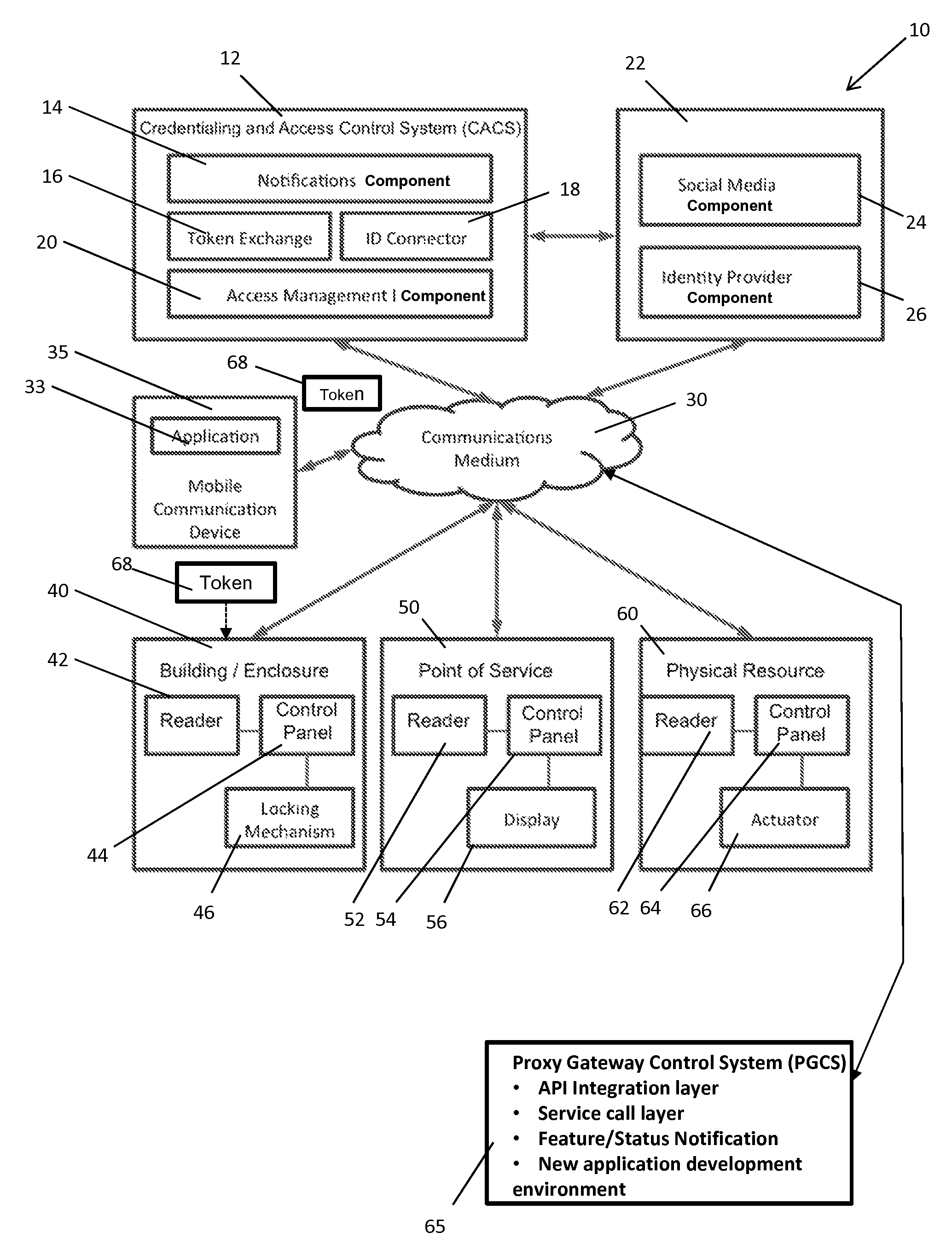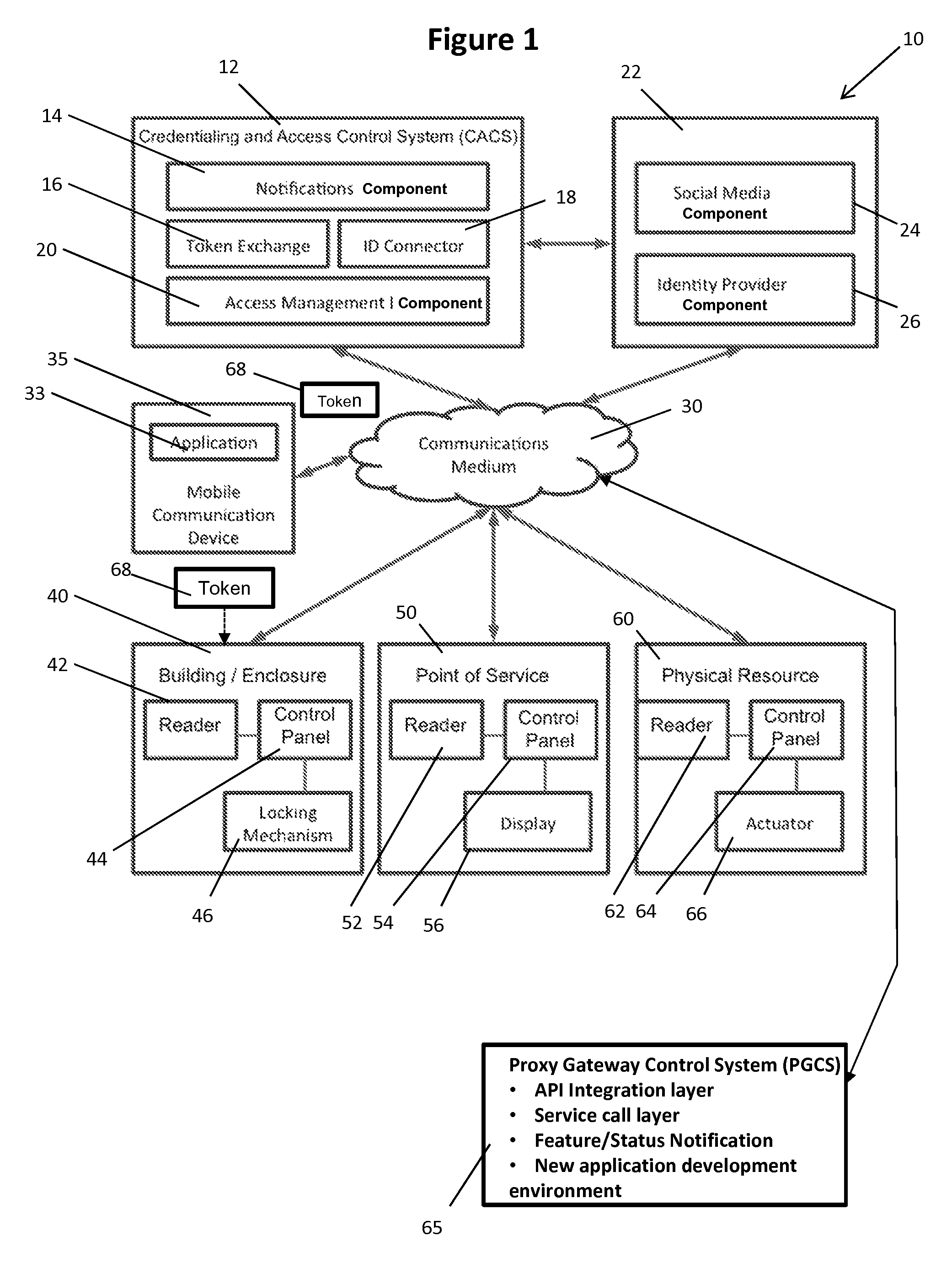System and method for physical access control
a physical access control and access control technology, applied in the field of access control and identity management, can solve the problems of not being able to automatically connect or enable functionalities from one domain to the other, and achieve the effect of greater consistency and uniqueness
- Summary
- Abstract
- Description
- Claims
- Application Information
AI Technical Summary
Benefits of technology
Problems solved by technology
Method used
Image
Examples
operational examples
[0047]The sequence in FIG. 3 provides an example of one method by which the initial identity binding between the internal CACS identity records and one or more external ID providers takes place in accordance with one embodiment of the present invention. The use case illustrated in FIG. 3 is for the situation where the “owner” of the physical resource is also the “user” of the one or more physical resources. As shown in FIG. 3, and as indicated at step 100, a user / owner first provides the CACS of the present invention with permission to login and perform various activities within an electronic identity provider account (e.g., social media account) of the user, accessed via Identity Provider 22. It will be appreciated that the user in this example will have previously established an electronic identity with login credentials with an entity qualifying as an IdP, and will further have previously established access control capabilities with one or more physical resources. The user can ac...
PUM
 Login to View More
Login to View More Abstract
Description
Claims
Application Information
 Login to View More
Login to View More - R&D
- Intellectual Property
- Life Sciences
- Materials
- Tech Scout
- Unparalleled Data Quality
- Higher Quality Content
- 60% Fewer Hallucinations
Browse by: Latest US Patents, China's latest patents, Technical Efficacy Thesaurus, Application Domain, Technology Topic, Popular Technical Reports.
© 2025 PatSnap. All rights reserved.Legal|Privacy policy|Modern Slavery Act Transparency Statement|Sitemap|About US| Contact US: help@patsnap.com



